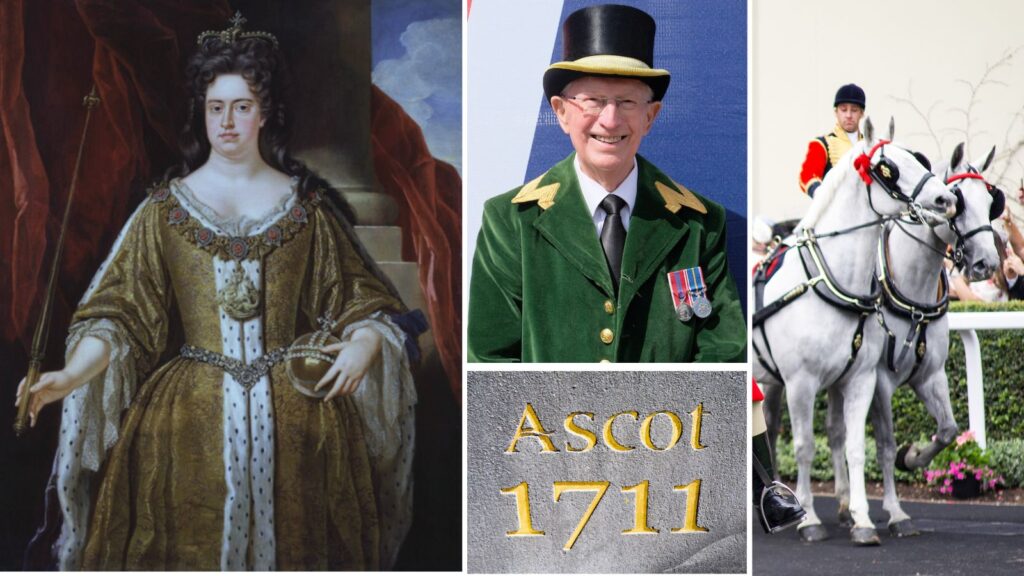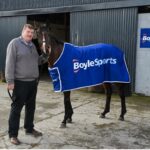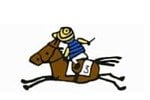In case you have a lull in conversation between the races at Royal Ascot, this selection of amusing anecdotes and fascinating facts should keep everyone entertained!
COUNTING MONARCHS
Since Queen Anne founded Ascot Racecourse back in 1711, a further 11 monarchs have acceded to the British throne.
TOP DAME
Mrs Gertrude Shilling was undeniably the premier indefatigable sartorial dame of Ascot (nicknamed The Ascot Mascot), but she has met with competition from all over the world, including in 1976 when Australia’s Dame Edna Everage, alias Barry Humphries, attended with a four foot Sydney Opera House perched on ‘her’ head.
Following the successes of Choisir, Takeover Target, Miss Andretti, Scenic Blast and Black Caviar on the track, Royal Ascot is as much an institution in Australia as at home these days, but back then Dame Edna said to the assembled press that she: “wasn’t aware it was a racing event until the other day. I always thought it was an exhibition of gas water heaters!”
CHURCHILL IN CHARGE
Viscount Churchill (the Hon. Victor Albert Spencer) was appointed as the first sovereign’s representative at Ascot in 1901. He is reputed to have taken personal charge of vetting applications for entrance into the Royal Enclosure, sorting letters into three baskets marked ‘Certainly’ ‘Perhaps’ and ‘Certainly Not.’
Viscount Churchill loved this task and became notorious for recognising faces in the Royal Enclosure and challenging those who should not be there. For this purpose he was granted special access to the Divorce Registry, as those on it were not permitted access to the Royal Enclosure.
This was also a time before actors were allowed in the Royal Enclosure, so when King Edward VII asked the actor Charles Hawtrey if he would be seeing him at Royal Ascot, Hawtrey explained that rules prevented it… whereupon the King took it upon himself personally to send Hawtrey the necessary badge.
When the Royal Ascot meeting came, Hawtrey entered the Enclosure to the great surprise of the Viscount – now Lord – Churchill, who said: “I don’t remember sending you a badge.” Hawtrey explained that this was not surprising as he hadn’t – “King Edward did!”
SYMPATHETIC DONATION
Many people were sympathetic to the Ascot Authority in June, 1964, after the Royal Meeting had to be curtailed due to severe rain, thus blighting the opening of the new Royal Enclosure Stand. None more so than the old lady who sent the Authority £1 because she was so distressed to hear of the course’s bad luck. The Duke of Norfolk, Her Majesty’s Representative at the time, responded with equal magnanimity, thanking the lady and inviting her to a day’s racing.
GREEN VELOUR
It is said that when Queen Anne was in residence at Windsor Castle, she imported a large quantity of green velour material from France, in which she dressed her “Yeoman Prickers,” who were armed with pikes to move people out of the way at the races! That particular practice doesn’t sit comfortably with the modernday customer service ethic but the outfits are remembered with today’s ‘Greencoats’, the ceremonial guard for The Queen at Ascot, wearing the livery.
MAKING AN ENTRANCE
In the early 1920s, Lord Lonsdale drove every day from his rented house adjoining the Winkfield Road crossing, up the High Street to the racecourse entrance with outriders, drivers and footmen, all wearing his distinctive yellow livery. The proceedings were so grand that critics claimed he was trying to rival the Royal Procession.
HOT PANTS ARE BANNED
The Duke of Norfolk must have been dismayed to read in The Times and The Telegraph on April 27, 1971 that Ascot would permit ‘hot pants’ in the Royal Enclosure! The next day he corrected the misinformation in no uncertain terms.
RACING HANDICAP
Back in 1954, The Queen had a famous Royal Ascot triumph with the brilliant Aureole, who had suffered a minor eye injury a few days before the Meeting. When visiting the paddock just before the race, The Queen asked her jockey, Eph Smith, who wore a hearing-aid, whether he would win. The reply came: “Well, Ma’am, we are rather handicapped. The horse is blind in one eye and I’m deaf!”
MARK OF RESPECT
King Edward VII’s mother, Queen Victoria, was known to have frowned upon her son’s general and unparalleled enthusiasm for good living and, of course, racing, but on his accession in 1901, the new King closed the Royal Stand completely for the Royal Meeting due to the death of his mother and requested that all those who attended within the Royal Enclosure wear black.
CARRIAGES BOOKED UP
Due to the knock-on effects of the General Election, the 2001 Royal Procession was restricted to two days as the horses and carriages were required to convey The Queen to Wesminster for the State Opening of Parliament on the Wednesday and had to be in place for a practice on Tuesday. The Royal Party, including The Queen, came by car on both days and arrived in time for racing.
BRILLIANT BULTEEL
Sir John Crocker Bulteel was Clerk of the Course from 1946 until his death in 1956. A figure of great importance in the history of Ascot Racecourse, Sir John Crocker Bulteel was known as an outstanding racing administrator but it was his love of racing that he is most famous for.
It is due mainly to the dedication of Sir John that today Ascot stages more than just the Royal Meeting. The King George VI & Queen Elizabeth Stakes, initially run as the Festival of Britain Stakes, was his brainchild. The race was first run in 1951 and did more than any other race to change the face of top-level racing in this country and, ultimately, the world. It promoted the cause of international inter-age competition and more often than not, its winner is the seasonal champion.
SOGGY SHOES
During the foot and mouth outbreak in 2001, the management suggested that ladies bear in mind the precautionary foot and mouth disinfectant mats on all entrances to the racecourse when considering their footwear. Not everyone listened which made for some interesting pictures in the likes of Hello! and Harper’s Bazaar magazines that year!
DIFFICULT QUESTION
A question which appeared in the Racing Post Christmas quiz in 2001 resulted in numerous calls to all departments at the racecourse. This is the answer:
In 1964, Trelawny was to bid for a third consecutive Ascot Stakes/Queen Alexandra Stakes double. He was beaten in the Ascot Stakes but would have walked over in the Queen Alexandra on Friday had the meeting not been abandoned due to waterlogging.
WINNERS ALL ROUND
In 2005, Ascot auctioned some 300 lots of memorabilia associated with the old stand. The auction raised £389,965 with Racing Welfare the primary beneficiary with the bulk of this coming from a bid of £280,000 for the wrought cast iron entranceway from the track to the Winners’ Enclosure, purchased by leading owner Bill Gredley. The crowd fell silent as the bid just kept going up and up from an original reserve of just £20,000 – £30,000!
DING DONG
Jockeys at Ascot are called to mount by a bell in the parade ring and, unique to Ascot, a bell is also rung as the horses swing into the straight for races run on the round course.

Karen can usually be found glued to her computer or at the stables. Having edited several national magazines she co-founded Eclipse Magazine in 2008 after realising that many of her friends were nervous about going racing due to lack of information – what to wear, how to bet etc.
She absolutely loves her job (how many people can say that?!) and is truly grateful to all supporters of and contributors to Eclipse Magazine.
If you are reading this she would like to say THANK YOU! (And please spread the word about Eclipse…!!)





